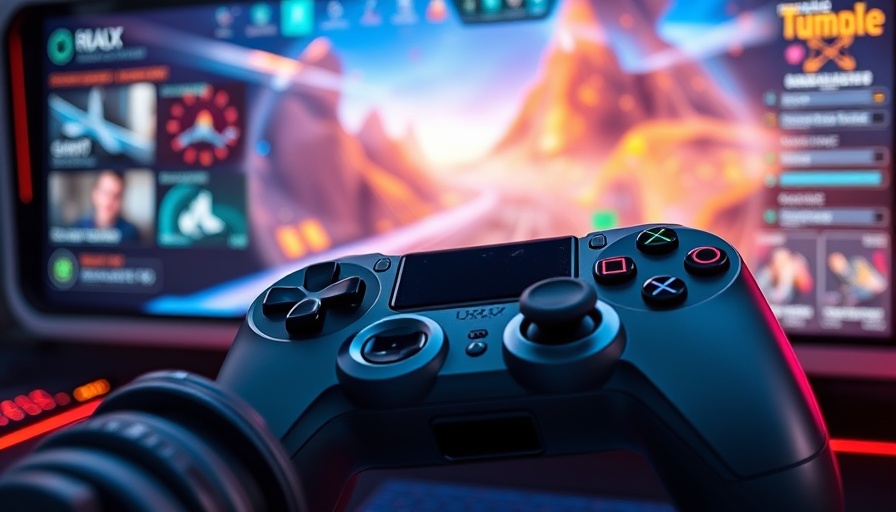
Revolutionizing Gaming with AI: What Microsoft's Muse Promises
Microsoft is set to change the landscape of gaming with its new Muse generative AI technology. This innovative tool will feature on Copilot Labs, allowing users to actively experiment with AI-generated gaming experiences. The Muse model represents a significant advancement in AI integration within the gaming sector, aiming to merge technology with creativity in unprecedented ways.
A Glimpse into Muse's Functionality
Muse, or the World and Human Action Model (WHAM), has been designed to understand 3D game environments, physics, and player interactions. With this understanding, Muse can generate gameplay sequences from user commands, effectively letting players create their own interactive experiences on-the-fly. Imagine controlling a game with your Xbox controller and seeing an entirely unique gameplay experience unfold based on your input. While gameplay may currently operate at low frame rates (around 10 FPS), the potential for growth as technology advances remains promising.
Mixed Reactions from Game Developers Surrounding AI Integration
The reception of Muse by game developers has been somewhat mixed. While excitement exists for the possibilities AI integration offers, there is also hesitation due to fears of job displacement and creative loss. Microsoft acknowledges these concerns and allows developers autonomy over whether to incorporate AI like Muse into their projects. This perspective fosters an environment where creativity can flourish while addressing industry apprehensions.
The Journey of Muse: How Microsoft Got Here
The origins of Muse trace back to a collaboration between Microsoft Research and Xbox Game Studios’ Ninja Theory, utilizing data from the multiplayer game *Bleeding Edge*. The development process has been substantive, involving the training of the AI using over one billion images along with continuous gameplay data over several years. This foundation has provided Muse a rich source of creativity and context from which it can operate.
Future Predictions for AI in Gaming
Looking forward, the introduction of Muse may signify a transformative era for the gaming industry. As AI's capabilities expand, developers may leverage Muse not just for minigames but for prototyping entirely new gaming genres and experiences. The potential for reviving classic games, making them accessible on modern devices, opens exciting prospects for nostalgia-driven players.
Prioritizing Collaboration: The Role of the Gaming Community
Microsoft's approach underlines the importance of collaboration with the gaming community in developing AI technologies. With input from diverse creators worldwide, Microsoft aims to ensure that Muse serves as a catalyst for creativity rather than a replacement for human ingenuity. This cooperative strategy is evident in how Microsoft has structured the launch of Copilot Labs, enabling direct user feedback to shape future iterations of Muse.
Engaging with the AI Community Through Copilot Labs
As part of its commitment to fostering an AI community, Microsoft encourages participants to join its Discord channel to share experiences and feedback as they experiment with Muse. This venture not only allows gamers and creators to interact with AI technology hands-on but also aids Microsoft in iterating the tool based on real-world insights and experiences.
Conclusion: A Call to Action for Gamers and Developers
With the advent of Muse, Microsoft is embarking on an exciting journey to redefine gaming through AI. As a gamer or developer, engaging with these new tools can enhance your creative potential or provide fresh experiences in gaming. Whether you're passionate about gaming or the technical intricacies behind it, there's a world of possibilities waiting for you in Copilot Labs. Get involved and shape the future of gaming today!
 Add Row
Add Row  Add
Add 




 Add Row
Add Row  Add
Add 

Write A Comment